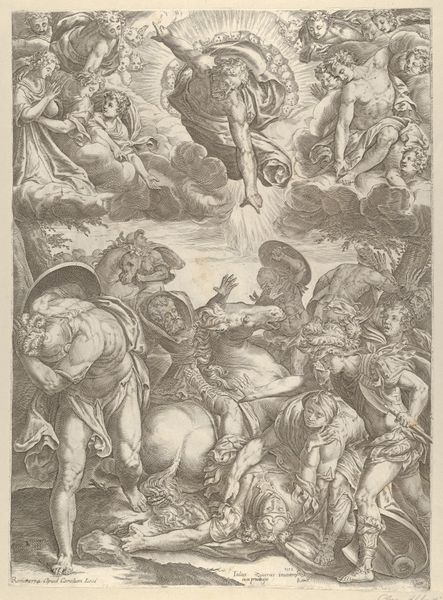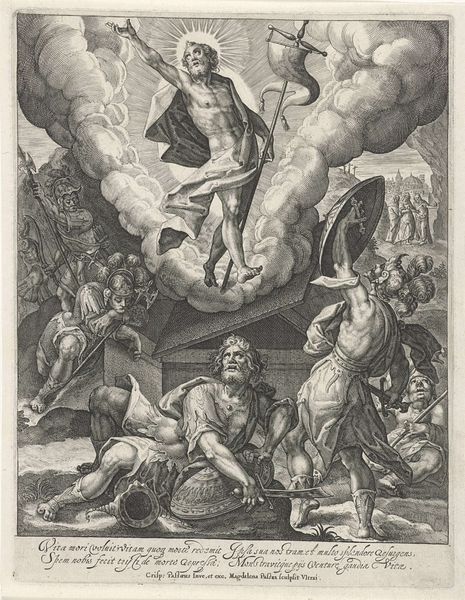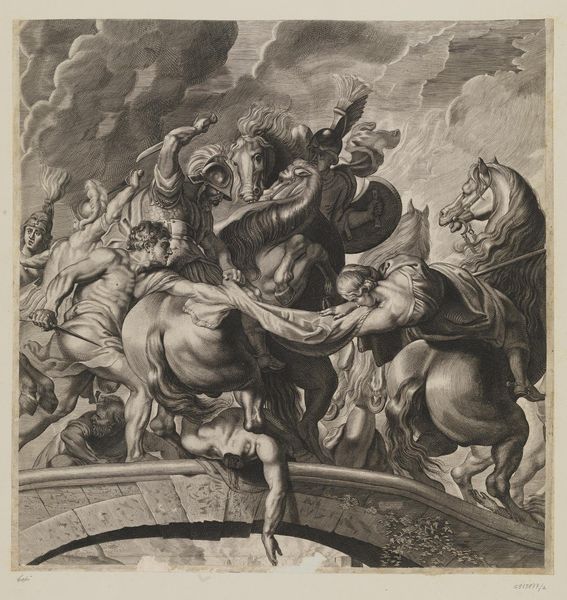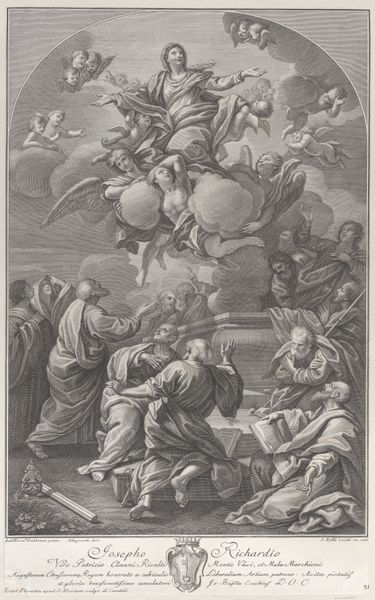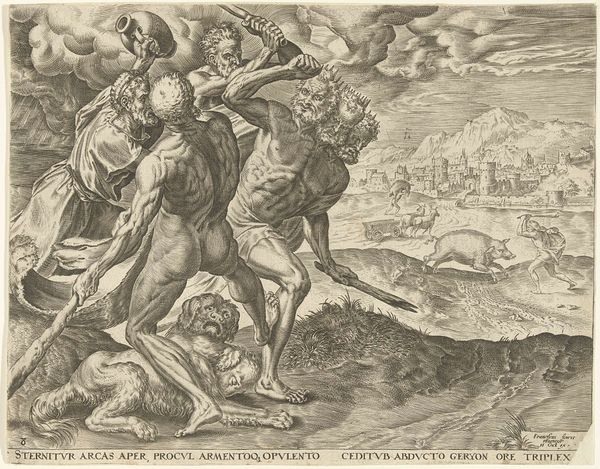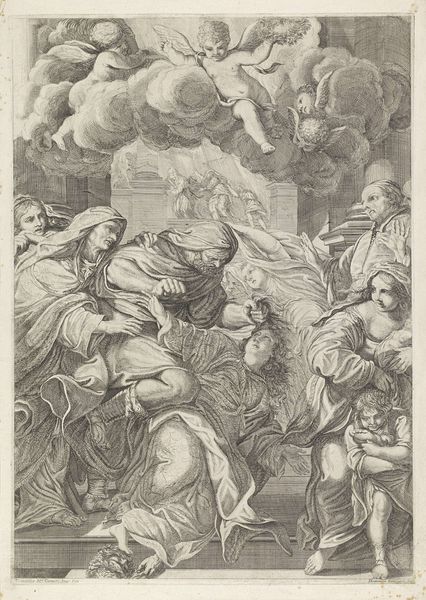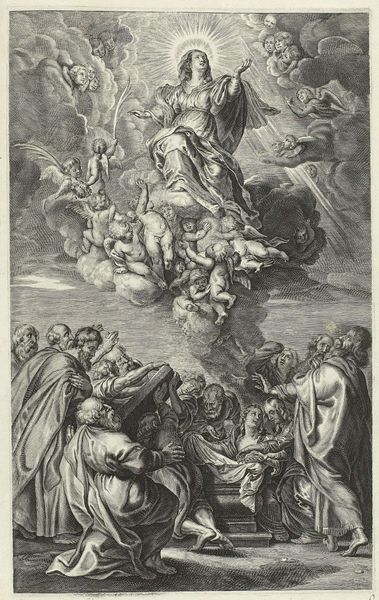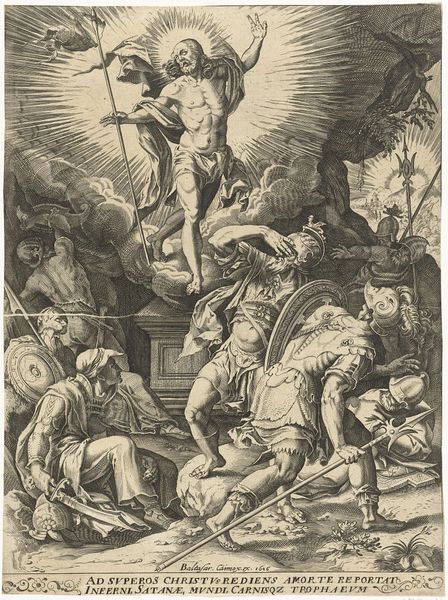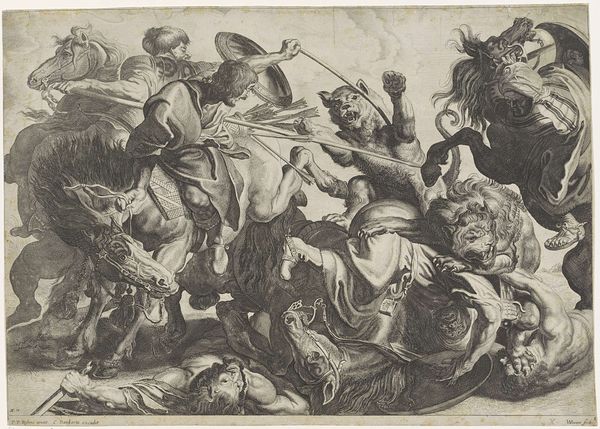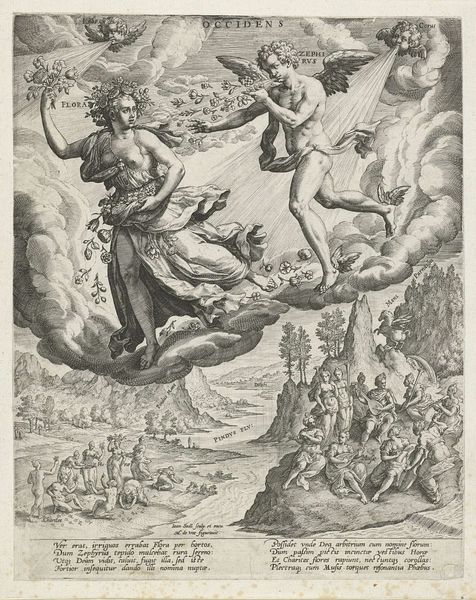
print, engraving
#
narrative-art
# print
#
pen illustration
#
pen sketch
#
pencil sketch
#
figuration
#
form
#
pen-ink sketch
#
line
#
sketchbook drawing
#
history-painting
#
northern-renaissance
#
engraving
Dimensions: height 250 mm, width 204 mm
Copyright: Rijks Museum: Open Domain
This print, made by Wierix around the turn of the 17th century, shows the prophet Elijah swept to heaven in a chariot of fire. Its intricate detail comes from the technique of engraving, where lines are incised into a metal plate, which is then inked and printed. Engraving was highly prized because it allowed for an incredible amount of detail, but it was extremely labor-intensive. The engraver would have needed to be not only a skilled artist but also a highly trained technician, able to work with precision tools to create the desired effect. This wasn't just art, it was a kind of high craft. Prints like this were relatively affordable, and played a key role in disseminating religious imagery during the Counter-Reformation. They were also a demonstration of skill, and of the kind of intense, specialized labor that was increasingly valued in the early modern period. By considering the processes, the labor, and the social context of this print, we can better appreciate its full significance, beyond simply its religious subject matter.
Comments
No comments
Be the first to comment and join the conversation on the ultimate creative platform.
